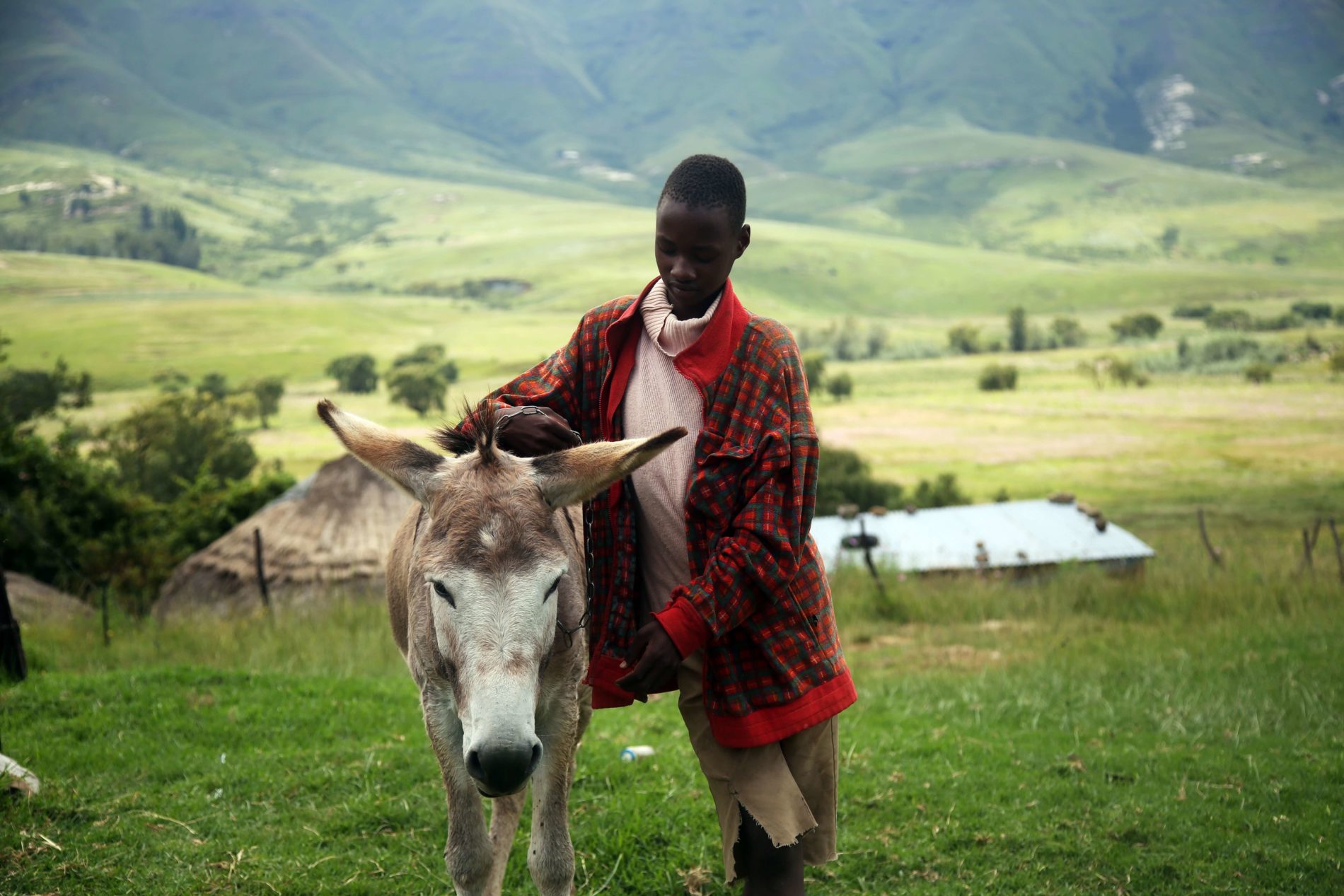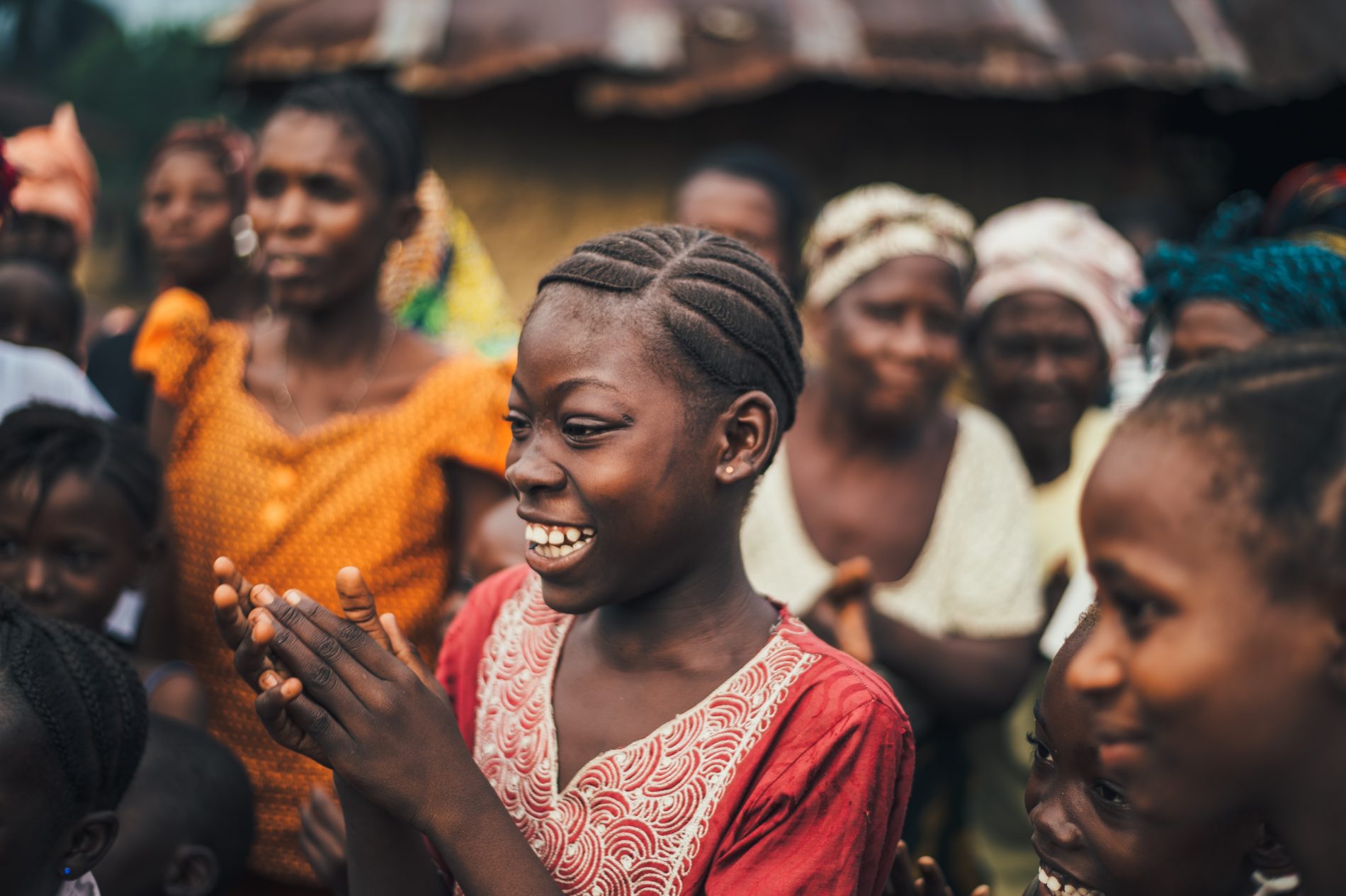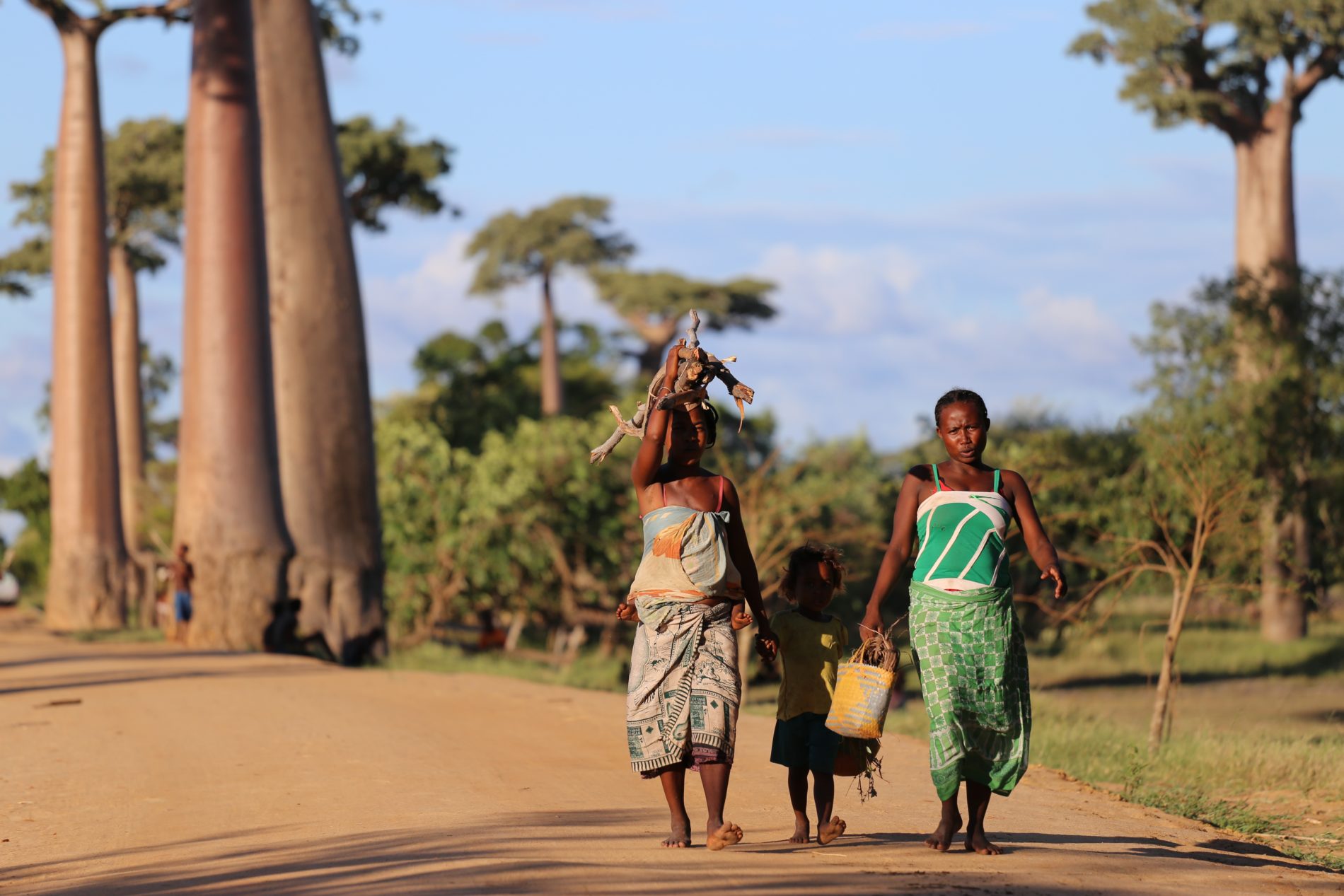The Sustainable Development Goals (SDGs) and Africa’s Agenda 2063 define the context in which FAO’s work, and those of its partners, will transform lives in the continent over the next decade. The Agenda 2063—“The Africa we want,” advocates solidarity, and aims to build an integrated, more peaceful, prosperous and united Africa. The unveiling of the African Continental Trade Agreement in Kigali in 2018 is widely perceived as a game changer for Africa, with 55 countries merging into a single market. Central to these high-level commitments, is the vision of an economically and politically united Africa, where hunger ceases to exist.
Currently, Africa faces numerous, multifaceted and enormous challenges. Hunger and malnutrition still flex their muscles in the region. Challenges remain to sustainably increase food productivity, create rural incomes, empower women, combat youth unemployment, reduce migration, address climate change head-on, and close the infrastructure gap. The capacity of African countries must be strengthened to innovate, update technologies, as well as exchange and share effective development solutions. However, recent successes show that these problems are surmountable. Sufficient development solutions do exist in Africa and elsewhere—technological, human and financial that could be effectively deployed. This article highlights a shining model of how an Africa-led financial mechanism has helped transform lives across the continent. IF you are interested in this subject, check also the next linked post about the history of common African-American surnames.

IN THE PHOTO: PERSON HOLDING MULE, LESOTHO, AFRICA PHOTO CREDIT: ANGELO MOLEELE
A UNIQUE AFRICA-TO-AFRICA FUNDING INSTRUMENT
Launched at the FAO Regional Conference for Africa in June 2013, the main purpose of the African Solidarity Trust Fund (ASTF), was to strengthen food security in Africa, in line with regional priorities and emerging challenges. This Africa-led mechanism unlocks the potential of using unearmarked pooled and catalytic funds from African countries to support Africa-to-Africa initiatives and bring about rural transformation in food and agriculture, at both regional and country level. Harnessing proven homegrown development solutions, including knowledge, technology and good practices for food security and nutrition across the continent serve as core enablers of this initiative.
Notably, two African countries took a bold step to kick start the implementation of the Fund’s first phase—namely, Republic of Equatorial Guinea (USD 30 million) and Republic of Angola (USD 10 million), with a symbolic contribution from a group of civil society associations in Africa. Facilitated by FAO at near-zero overhead, the Fund goes directly to support with notable agility in responding to needs in the continent. According to the FAO Director General, José Graziano da Silva, the visionary behind the Fund, “The ASTF was designed to be an effective catalytic fund, seed money or gap funds for removing technical barriers, scale-up proven practices and responding rapidly and decisively to emerging needs and challenges in the continent, as well as to leverage ongoing initiatives, and create synergies in order to achieve transformative impacts.” One of the most striking features of the ASTF was its display of what “seed money” can achieve through strong solidarity among African countries. It has become one of the most successful Africa-led flexible funding instruments in FAO in recent times.

IN THE PHOTO: ASSORTMENT OF COINS PHOTO CREDIT: STEVE JOHNSON
HIGHLIGHTS OF ACHIEVEMENTS FROM THE FIELD
Over the past five years, this African-led funding mechanism has achieved remarkable results. The Fund has supported 18 projects in over 40 African countries, benefitting hundreds of thousands of rural people, women, youth and children. It enabled FAO to assist African countries in addressing critical agricultural challenges relating to food security and nutrition, natural resources management, and climate change, while addressing gender and women empowerment and resilience to livelihoods.
At the regional level, Southern African countries were supported to strengthen controls on threats to food safety, plant and animal pests, as well as agricultural productivity and trade. Approximately 4500 experts from eight SADC countries enhanced their capacity to tackle transboundary pests and diseases through training and coordination support, which enabled the region’s successful response to the fall armyworm invasion. In West Africa, decent rural employment opportunities were supported for young people through sustainable aquaculture and cassava value chains. The Fund also supported rapid intervention projects in West Africa during the Ebola outbreak. It developed and financed projects that implemented effective prevention and control mechanisms to improve monitoring and response to pests and diseases such as autumn worms, fruit flies, Tuta absoluta, etc. Likewise, Central African countries received support to strengthen food security in urban areas. In East Africa, support on nutrition-sensitive agriculture helped improve nutrition and created employment opportunities for young people.
At the country level, some examples of key results are highlighted below:
- In South Sudan, nearly 200,000 families in conflict-affected areas enhanced their nutritional intake. About 560,000 animals protected from risk of disease outbreak thanks to a country-wide vaccination initiative. This helped protect assets built livelihood resilience for 19,000 households.
- Malawi and Mali 2,600 farm families and over 1 200 women and youth were empowered to effectively engage in food production and marketing activities, and to start up personal businesses; 400 new jobs were created. Farmers indicated that food now lasts up until next harvest whereas previously there were several months of shortage. In addition, 8500 households in Malawi were supported to recover from flood disaster in 2015.
- About 12,000 rural smallholders in Ethiopia, including women and youth, increased their income due to better access to inputs and the promotion of livelihood diversification strategies.
- Nearly 160,000 vulnerable households in Niger improved their agricultural productivity and food security thanks to quality input distribution and investments and investment in livestock and small-scale irrigation infrastructure
- In Central Africa Republic, 16,000 households had increased access to agricultural inputs thereby increasing their rice and groundnut production. Food security assessment and analyses was also supported.
- More than 4,000 farm families in Ebola Virus Disease-affected communities in Guinea, Liberia, and Sierra Leone doubled their rice and vegetable productivity thanks to loan schemes and access to critical inputs and training. Household earnings in Sierra Leone increased from zero to USD 50-100 per week.
- Over 1,500 female and male youth in Burundi, Kenya, Rwanda, Uganda improved their income and access to food through decent job creation and stronger productive capacities in poultry, egg production and aquaculture value chains.
- Over 1,000 women in Democratic Republic of the Congo, Gambia and Eswatini, including Dimitra Club members, were empowered through training in commercialization and value chain development, farming techniques, pests management, and access to credit and financial services.
In general, ASTF report showed that over the past five years, hundreds of thousands of farm families have been supported across the continent through diverse targeted initiatives that increased productivity, addressed pest and diseases, ensured food security, nutrition and food safety, created jobs, and increased rural income.

IN THE PHOTO: WOMAN SMILING AND CLAPPING PHOTO CREDIT: ANNIE SPRATT
LESSONS AND CHALLENGES
A high-level field mission was undertaken to Uganda, Malawi and Cameroun in January 2018. The mission confirmed the success of the ASTF on the ground, as well as identifying opportunities and key challenges faced and a number of common lessons learned. The mission reported that For instance, i) there is high degree of ownership by host countries due to the unique nature of the trust fund, supported by African donors; ii) the catalytic use of ASTF money was obvious in the three countries particularly in Malawi. A conscious planning for catalytic effect and synergies in every future initiative can help snowball resources and scale up ASTF impacts; iii) Use of farmer field school approaches was common as a key delivery modality. Future efforts should be geared toward integrating innovative and holistic approaches, including digital innovation, agroecology and climate smart approaches. There is need to ensure greater engagement and ownership and high level of buy-ins by local and national authorities. Scaling up the number of supporting groups of producers and beneficiaries, there is need to ensure more value for money in all ASTF-supported initiatives. Use of common approaches to monitoring and evaluation across ASTF initiatives has been suggested.
MONEY BEGETS MONEY
It is noteworthy that the achievements by ASTF projects have helped mobilize larger new partnerships and financial supports from several governments and development partners at the country level. Nearly USD 50 million additional resources have been leveraged as spin-off effects of ASTF projects through several development partners in four African countries. Most notably, the European Union funded two FAO’s projects in Malawi totaling about USD 45 million, mainly to scale up the impact of ASTF project approaches to 172,000 more beneficiaries in the country. In addition, other partners such as Swiss Development Cooperation in Liberia, Grand Duchy of Luxembourg and UNHCR in Mali, and Norway in Niger, provided additional resources combined total of over USD 2 million to enable FAO replicate the experiences of ASTF projects to reach greater number of beneficiaries.

IN THE PHOTO: TWO ADULTS AND A CHILD WALKING, MADAGASCAR PHOTO CREDIT: 2PHOTO POTS
TOWARDS AN EXPANDED PARTNERSHIP
Despite the achievement of ASTF, larger number of beneficiaries are still waiting to be supported. The challenges are enormous, and must be matched with solutions and resources. The revitalised ASTF aims to expand the size of the Fund, and attract a critical mass of contributors from African countries, and its partners.
The revitalized ASTF seeks to expand its reach and partnership base in terms of both financial volume and scale of impact. The new ASTF phase has set a target to mobilize USD 150 million in the next three years. This involves two innovative financial modalities including:
- i) Africa to Africa funding window – building on the lessons from the first phase to facilitate
“Africa-to Africa” initiatives. This will include contributions to help address in-country challenges of the contributing African countries, through Unilateral Trust Funds, in addition to supporting other countries in the continent; and
- ii) Africa’s Partners funding window – which enables ASTF to receive contributions from resource partners, “friends of Africa,” e.g. bilateral and multilateral donors, development banks, private sector and other capital providers, including through de-risking of blended financing and impact finance, and agri-invest opportunities.
The revitalised ASTF will support accelerated and targeted actions for implementing the SDGs by African countries, with a view to achieving collective outcomes at regional level. In addition, it will strengthened intra-Africa exchange and sharing of development solutions while fostering knowledge creation and dissemination among Africa’s Centres of Excellence.

IN THE PHOTO: DIRT TRACK THROUGH GRASS FIELDS, KENYA PHOTO CREDIT: POP & ZEBRA
LOOKING INTO THE FUTURE
The Africa Solidarity Trust Fund is a unique and shining example and successful model of Africa-led flexible instrument. It is one of the few cases where money from African countries has helped to transform lives across the continent. One of the biggest constraints to scaling up the impact of ASTF is its limited financial resources and narrow resource partner base. The ASTF has the potential to involve a wider range of players, as well as to make transformative impacts. The FAO Director General said, “The beauty of ASTF is that Africans are taking the lead. More support by a critical mass of African countries and partners are needed to sustain and step up the momentum.” He further said, “I am personally convinced that with joint commitment and strong political will by all of us, we shall overcome the development constraints faced by the continent. It is only by working together that we can make a difference!”
Through the ASTF, African countries have the opportunity to exchange their knowledge, experiences, resources and homegrown development solutions for the benefit of others. There is also an opportunity to bring other key partners of Africa on board—to make both financial and in-kind contributions. According to the words of the former Chairperson of the African Union, H.E. Nkozasana Dlamini-Zuma, “We either unite or collectively perish, as no single country or region can be an island of prosperity in an ocean of poverty, insecurity and underdevelopment.” African countries must unite in the spirit of moving the ASTF to the next level, for the good of the continent and its people. Africa must unite to defeat hunger, poverty and adverse impact of climate change. Africa must unite to get its youth and women employed and empowered. The ASTF provides a pathway for making it happen—moving from commitments to actions on the ground and achieving tangible results.









